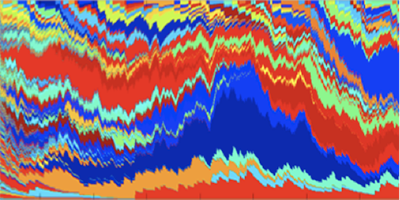Fighting for Attention
A “meme” is an idea, style, or behavior that spreads within society; examples include songs, catch phrases, Internet videos, and fashions. The name was coined by British evolutionary biologist Richard Dawkins to suggest the analogy with a gene: a meme can replicate, mutate, and evolve, competing for success. But what mechanisms determine the popularity of a meme? Reporting in Physical Review Letters, James Gleeson at the University of Limerick, Ireland, and co-workers present a model that describes how memes spread and compete in a social network.
Gleeson et al. develop an analytical framework applicable to a social network like Twitter, composed of a set of nodes (users), each with a number of followers. At a given time, each user (re)tweets a meme of interest to his followers, which may boost its popularity. The formalism, inspired by epidemic models for contagious diseases, allows the study of how memes compete with each other for the limited and fluctuating resource of user attention, leading to some memes becoming popular and others remaining completely ignored.
The key result of their analysis is that the competition between memes turns the social network into a so-called critical system, i.e., a system close to the critical point of a phase transition. In such a state, minor disturbances lead to avalanches of events that drive the system to a new phase, e.g., one in which certain memes go viral. As expected for a critical state, the authors show that many statistical properties exhibit certain regularities. In particular, they are able to predict distributions of popularity following power laws whose exponents are close to empirical values. – Matteo Rini





